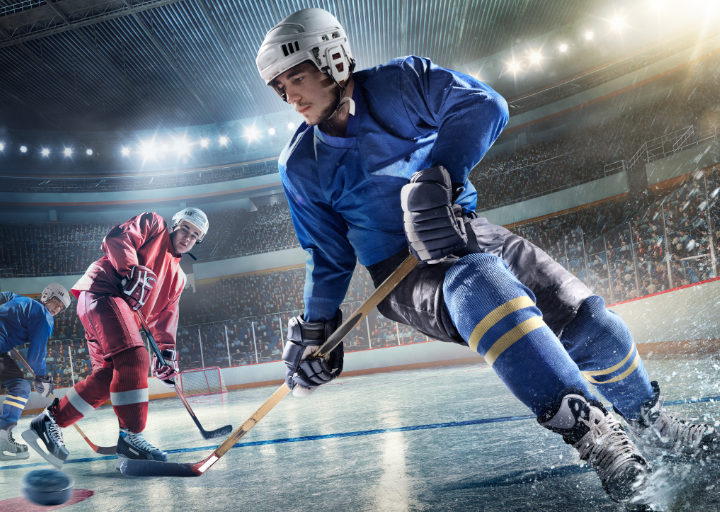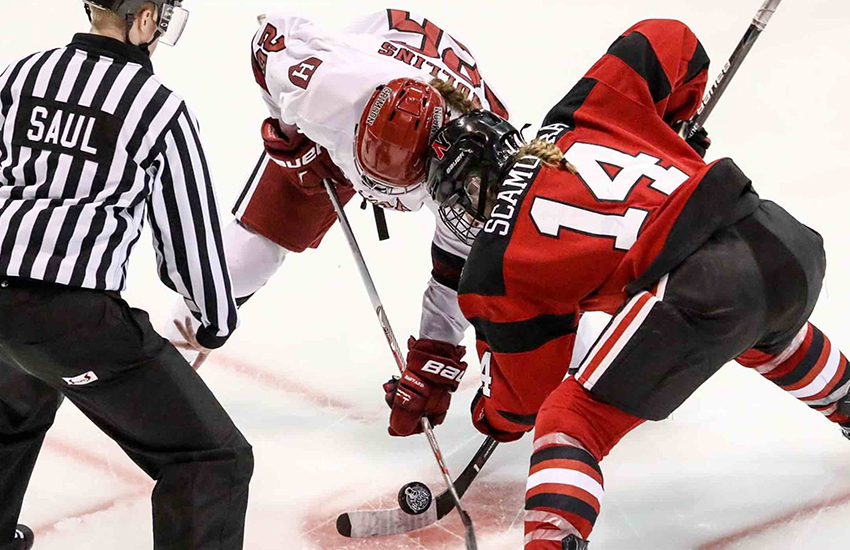Hockey, a fast-paced and thrilling sport, has captured the hearts of fans worldwide. Beyond the excitement of the game itself, there’s a growing community of individuals looking to elevate their hockey experience through sports betting. In this masterclass, we delve into the intricacies of hockey betting, exploring power plays, strategies, and the potential for lucrative paydays.
Understanding the Basics
Moneyline Betting
The most straightforward form of hockey betting involves predicting the winner of a game. Positive and negative odds represent the underdog and favorite, respectively. A “+200” odds mean a $100 bet yields a $200 profit if successful, while “-150” odds require a $150 bet to win $100.
Puck Line Betting
Similar to point spread betting in other sports, puck line betting involves handicapping the favorite with a goal handicap. For example, a -1.5 puck line means the favorite must win by at least two goals for a bet to pay out.
Total (Over/Under) Betting
This type of betting focuses on the total number of goals scored in a game. Punters predict whether the total goals scored will be over or under a specified number.
The Power of Power Plays
Hockey’s unique dynamics, especially the concept of power plays, can significantly impact the outcome of games.
What are Power Plays?
Power plays in hockey refer to situations where one team has a numerical advantage on the ice due to penalties assessed to the opposing team. When a player on the opposing team commits a penalty, such as tripping or holding, they are required to serve time in the penalty box, leaving their team short-handed.
During a power play, the team with more players on the ice has a significant advantage, as they can exploit the open spaces and create scoring opportunities. Typically, power plays last for two minutes, or until the penalized player’s team concedes a goal.
Key points about power plays include:
- Numerical Advantage: The power-play team has more players on the ice than the opposing team, creating a numerical advantage. This advantage often leads to increased puck possession and scoring chances.
- Strategic Set-Up: Teams often employ specific power-play strategies, including positioning players in strategic locations to capitalize on the open ice. Common power-play formations include the umbrella and the overload.
- Special Teams Importance: Power plays fall under the category of special teams, which also includes penalty kills. Teams that excel in both power plays and penalty kills tend to have a competitive edge in the league.
- Power Play Statistics: Teams’ success rates on power plays are tracked through power play statistics. This includes the percentage of power plays converted into goals, providing insights into a team’s offensive effectiveness.
- Game-Changing Moments: Power plays can be game-changing moments, swinging the momentum in favor of the team with the numerical advantage. Conversely, a successful penalty kill can boost the morale of the short-handed team.
Understanding power plays is crucial for both hockey enthusiasts and bettors. When assessing teams for betting purposes, it’s valuable to consider their historical performance on power plays and how well they capitalize on these opportunities. Teams with a potent power-play unit often have an edge, as their ability to convert in these situations can significantly impact the outcome of a game.
Analyzing Power Play Statistics
Teams with effective power plays often have higher goal-scoring capabilities. Look for teams with skilled power-play units and a high conversion rate.
Impact on Betting Strategy
Identifying teams with a strong power-play record can be a valuable factor when placing bets. Consider how a team performs on both the power play and penalty kill when evaluating matchups.
Mastering Advanced Strategies
Beyond the basics, successful hockey betting requires a strategic approach.
Team Analysis
- Recent Performance: Evaluate a team’s recent form, considering factors like winning streaks or slumps.
- Injuries: Stay informed about key player injuries, as these can significantly influence outcomes.
- Home vs. Away: Teams often perform differently depending on whether they are playing at home or away.
Goalie Matchups
Goalies play a pivotal role in hockey outcomes. Analyze the goaltender matchup, considering their recent performances and head-to-head records.
Back-to-Back Games
Teams playing consecutive games often face fatigue, impacting their performance. Consider this when assessing matchups, especially with travel involved.
Weather Conditions
Outdoor games or those in extreme weather conditions can affect player performance. Check weather forecasts for outdoor matchups.
Bankroll Management
A key aspect of long-term success in hockey betting is effective bankroll management.
Setting Limits
Establish clear limits on the amount you’re willing to wager. This prevents significant losses during a losing streak.
Unit System
Implement a unit system, where one unit represents a percentage of your total bankroll. This helps maintain consistency in betting size.
Avoiding Emotional Betting
Emotional decisions can lead to reckless bets. Stick to a rational, researched approach rather than letting emotions dictate your wagers.
Technology and Tools
In the digital age, technology plays a crucial role in enhancing the hockey betting experience.
Live Betting Platforms
Take advantage of live betting platforms that offer real-time odds and opportunities to adjust your bets during a game.
Analytics and Prediction Models
Utilize advanced analytics and prediction models to gain insights into player performance, team dynamics, and potential game outcomes.
Community Insights
Engage with online communities and forums to share insights and gather information from fellow hockey betting enthusiasts.
Risks and Responsible Betting
While the potential for paydays is enticing, it’s essential to acknowledge the risks and bet responsibly.
Responsible betting is crucial to mitigate the potential risks associated with gambling. One of the primary concerns is the development of addiction, as the thrill of winning can lead to compulsive behavior, causing individuals to lose control over their gambling habits. This addiction, in turn, can have various negative consequences, impacting both mental health and overall well-being.
Financial implications are another significant risk of gambling. Excessive betting may result in financial instability, with individuals wagering more money than they can afford to lose. This can lead to debt, bankruptcy, and other financial hardships. The stress and pressure to recover losses may contribute to mental health issues such as anxiety and depression, forming a complex interplay between financial and psychological consequences.
Moreover, problem gambling can strain relationships and social connections. The isolation that often accompanies excessive gambling can lead to a breakdown in relationships with friends and family. Employment and academic performance may suffer as individuals prioritize gambling over responsibilities.
To engage in responsible betting, individuals should establish clear limits on both time and money spent on gambling activities. It’s essential to budget wisely, using only discretionary funds for entertainment purposes and avoiding the use of credit cards or borrowed money for gambling. Additionally, recognizing the signs of problem gambling, such as increased time spent on gambling and neglect of responsibilities, is crucial.
In cases where gambling becomes problematic, seeking support is paramount. Friends, family, and professional counselors can offer assistance and guidance. Educational efforts should focus on understanding the odds and risks associated with different forms of gambling, enabling individuals to make informed decisions based on a realistic assessment of potential outcomes.
Balancing and diversifying activities is key to responsible betting. Maintaining a well-rounded life that includes hobbies and interests beyond gambling can help prevent the development of compulsive habits. Finally, taking advantage of responsible gambling tools provided by platforms, such as deposit limits and self-exclusion options, can aid individuals in managing and controlling their gambling behavior.
Conclusion
Hockey betting is an exhilarating pursuit that combines the love for the sport with the thrill of potential financial gains. By understanding the basics, leveraging power plays, mastering advanced strategies, managing your bankroll effectively, and utilizing technology, you can elevate your hockey betting experience. Remember, responsible betting is the key to long-term enjoyment and success in this dynamic and unpredictable realm.








